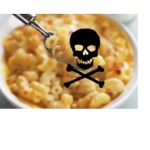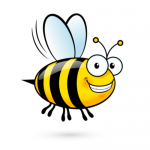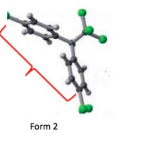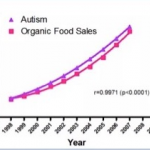"Science" took a walk on the wild side in a recent New York Times piece. It tried to tell us that the tiny amount of a class of chemicals found in macaroni and cheese (and everywhere else on Earth) is going to wreak havoc with our sex hormones. It's so bad, it's almost funny.
Chemicals & Chemistry
Our society is woefully illiterate on scientific matters. Yet instead of taking the opportunity to educate customers about the benefits of food science, some companies have chosen to cash in on public ignorance.
Though chlorine has been attacked as being "dangerous" to one's health, it's got a health-supporting side, too. In pools it combines with nitrogen-containing compounds to take them out of circulation. How do they get there in the first place? A recent study showed that (like it or not) people pee in pools — and the presence of artificial sweeteners proves it.
Junkscience.com has informed the New England Journal of Medicine that it may have been the victim of scientific misconduct regarding a paper recently published on air pollution and mortality. The contention was that material information was omitted from the work.
Delicious irony: our friends over at the Natural Defense Resource Council excel at scaring people about (mostly) harmless chemicals. They are also huge fans of solar power. But the solar panels contain the same chemicals that NRDC is always scaring us about. What to do? They haven't a clue.
Research paid for by two manufacturers of neonicotinoids suggest that sub-toxic levels of the agent may affect bee welfare, except it requires the bees to live in Hungary or the UK, and probably already have mites and undersized hives. Bees in Germany were fine. Why claim negative effects?
Manganese metal looks like, uh, nothing special. A shiny metal. But some of the chemical compounds that contain the element are very special. One, potassium permanganate may have been the inspiration for the name rock group Deep Purple.
One headache drug discovery chemists face is a preternaturally annoying problem called crystal polymorphism. It can kill an otherwise promising drug unless it can be fixed, and sometimes it can't. But NYU chemists discovered that DDT exists in two forms, with one better at killing bugs, which could lead to using smaller pesticide amounts.
In Part 1, we looked at some very strange science coming from the International Agency for Research on Cancer. Here, we examine some possible reasons for an apparent intentional omission of crucial data, which led to the misclassification of glyphosate as a "probable carcinogen." Looks like IARC knew this, but misclassified it anyway.
Plants produce pesticides to keep insects and other herbivores away. When we eat fruits and vegetables, we eat those pesticides, too. In fact, nearly all of the pesticides we consume in our diet are produced by the plants themselves.
Glyphosate is perpetually in the news. However, last month was especially busy because various agencies concluded that it either did – or did not – cause cancer or kill butterflies. The herbicide has even been implicated as a cause of autism, but the science is terrible. Perhaps the worst science came out of MIT in 2014 — confusing correlation with causation. A big no-no.
Sunscreen is an essential component of a healthy summer. But, the Environmental Working Group is sending the loud message that chemicals found in sunscreen are toxic and that it should be used as a last resort. But, that message is muddying the waters around a proven method of cancer prevention and the recommendations of the American Academy of Dermatology.











